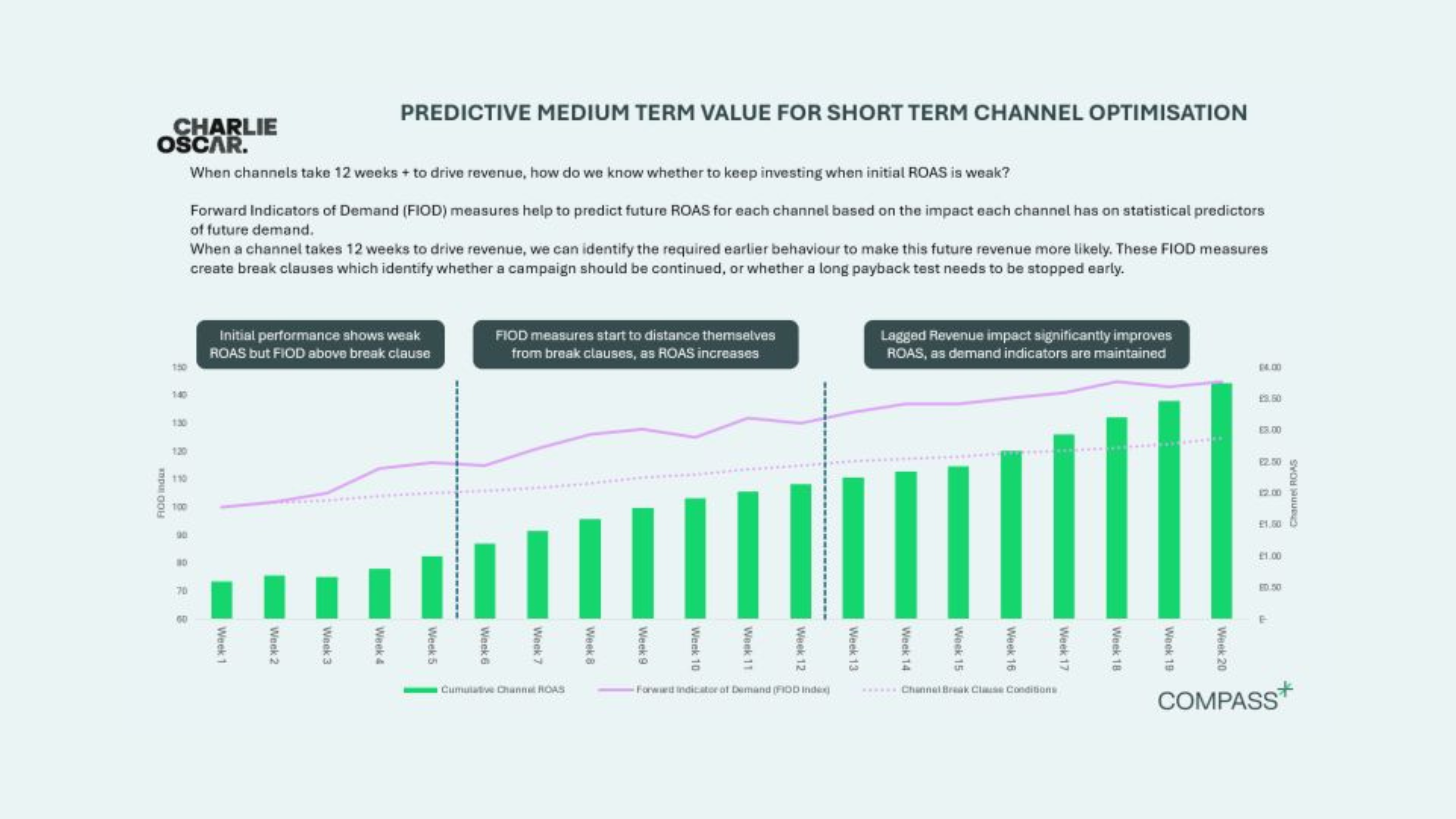
We hear this question a lot: “How do we know whether to continue investing in a channel when initial performance looks weak?”
It’s a tricky one. Some marketing channels give almost instant feedback, you can see conversions within days, especially if you’re targeting audiences who are already in-market. Other channels, though, take weeks or even months to show revenue impact. YouTube and CTV are classic examples: check performance after just a few days, and they often appear to fail. Especially if you judge them purely on short-term clicks, they can look like a poor investment.
Yet, across multiple brands, we consistently see strong ROI from these channels, it’s just that the impact isn’t immediate. There’s a long lag between campaign activation and the revenue that follows.
So, does this mean you need to wait 12 weeks (or more) to know if a channel is working? No. Speed of decision-making is crucial.
Here’s how we tackle it:
1. Build Tiered Measurement Models
We create models that map short-term behaviors to long-term value. Essentially, we ask: what early signals does a channel need to hit to have a chance at driving longer-term revenue?
These models produce statistical break clauses, which define a minimum threshold for short-term performance. If a channel fails to hit that threshold, it’s unlikely to generate meaningful long-term value. If it does pass, it’s not a guarantee, but it gives the channel the opportunity to succeed.
2. Embed Break Clauses Into Every Activation
By embedding these break clauses into campaigns, we can:
-
Make fast decisions without waiting weeks for final revenue results.
-
Align short-term indicators with long-term measurement, using geo holdouts or deseasonalized data to isolate channel-driven change.
-
Incorporate MMM outputs to account for external factors, ensuring smarter attribution.
3. Avoid Over-Focusing on Short-Term Returns
If you judge everything by immediate ROI, you massively limit growth potential. Some channels will always underperform in the short term but deliver exceptional long-term impact.
Pairing long-term measurement with short-term break clauses allows you to:
-
Maintain speed and agility in decision-making.
-
Keep a focus on long-term impact without waiting months to react.
-
Make smarter investments that unlock incremental marketing value.
The Takeaway:
Don’t let early performance blind you. Measure the short-term signals that predict long-term success, embed break clauses, and make decisions confidently, without waiting 12 weeks for the “truth.”

